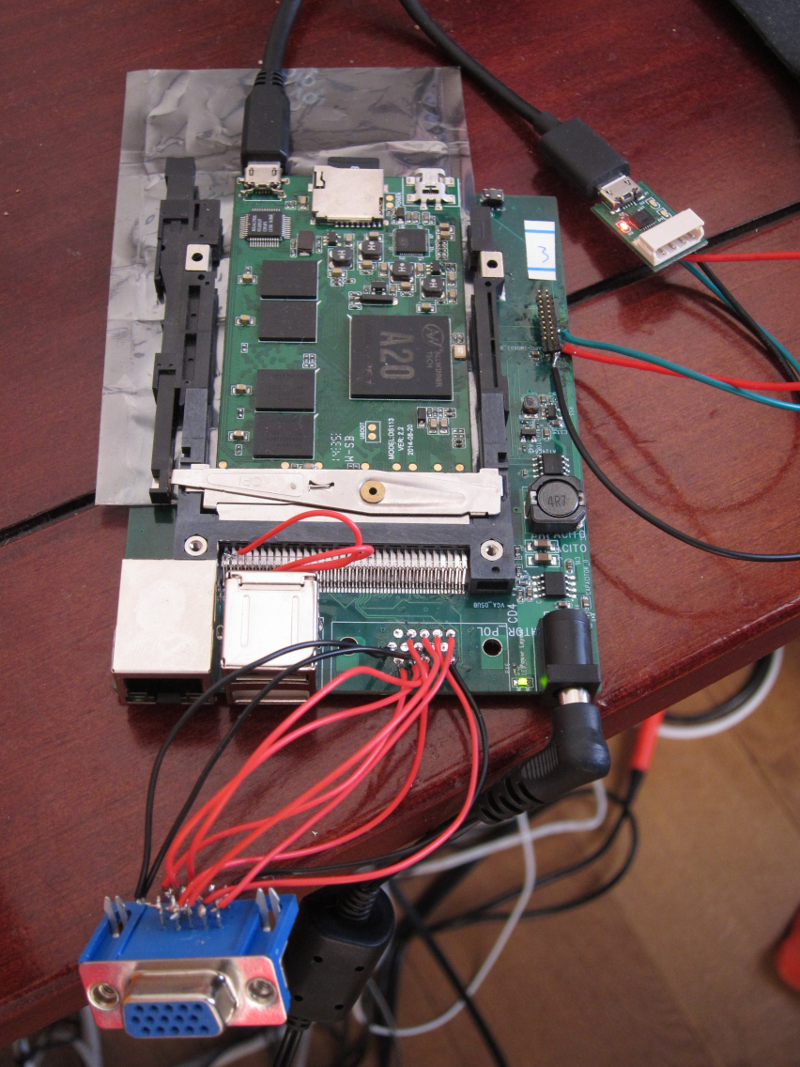27 Oct 2014: Status of Interfaces with EOMA68-A20 CPU Card
Working with the Revision 1.0 of the Micro-Desktop for the past five days has the following results. The changes needed have been implemented.
-
Ethernet is functional.
Lower USB2 port is functional.
All power regulators (DCIN, USB 5.0V, 3.3V and EOMA68 5.0V)
are confirmed functional.
Power / Reset button is functional.
Power LED is functional.
Micro-SD (on the Micro Desktop PCB) has been confirmed functional as
a 2nd SD Card slot, including SD-Card detection
(A20 script.fex includes the GPIO line for SD card detect).
VGA was rotated 180 degrees. A set of 10 wires was used to confirm
that the VGA circuit itself is functional.
The VGA protection diodes were mirror-imaged. The PCB-schematic part
has been corrected.
The 2nd USB2 on the EOMA68-A20 CPU Card was inverted. The Micro
Desktop PCB itself is fine.
TOP and BOTTOM had not been flood-filled. In the re-layout this has
now been done.
The 1.27mm 20-pin header was just far too small. It has been replaced
with a 2.54mm 20-pin standard header.
The power enabling circuit was too complex (or too simple, depending
on perspective). An attempt was made to detect clashes between 5V in
and USB-OTG power. However the circuit implemented would result in
continous power-cycling, so has been simplified to rely on the SY6280
thermal cut-off protection, instead.
The EDID EEPROM on the LG VGA Monitor tested had no proper addressing
set. It therefore occupied all I2C addresses from 0x50 through to
0x53, taking up the space occupied by the EOMA68 I2C EEPROM at 0x51.
The EOMA68 I2C lines therefore cannot be used for VGA EDID data,
and must be separate.
With two GPIOs being freed through the power management simplification
these were allocated instead for a bit-banging I2C driver.
All in all it looks like quite a lot however it is actually a very simple board - surprisingly with 100 components - so the above corrections have been done on-the-go and have taken only around a day to complete.
Obligatory photo - the rotated (working) VGA connector can be seen dangling down. Power supply is an off-the-shelf 12.0V however anything from 7V to 21V works fine. Soldered to the 20-pin header is a USB-to-RS232 converter for serial console and early boot access. Wires can be seen behind the 2-port USB socket, in an effort to swap D- with D+. In the EOMA68-A20 CPU Card can be seen the Micro-SD slot which contains a Debian GNU/Linux 7.0 root filesystem. Next to that is a USB-OTG cable which, half way along, has had its 5.0V line cut. This modification to a standard USB-OTG cable has proved invaluable. The CPU Card shown is one with 2GB of RAM.
